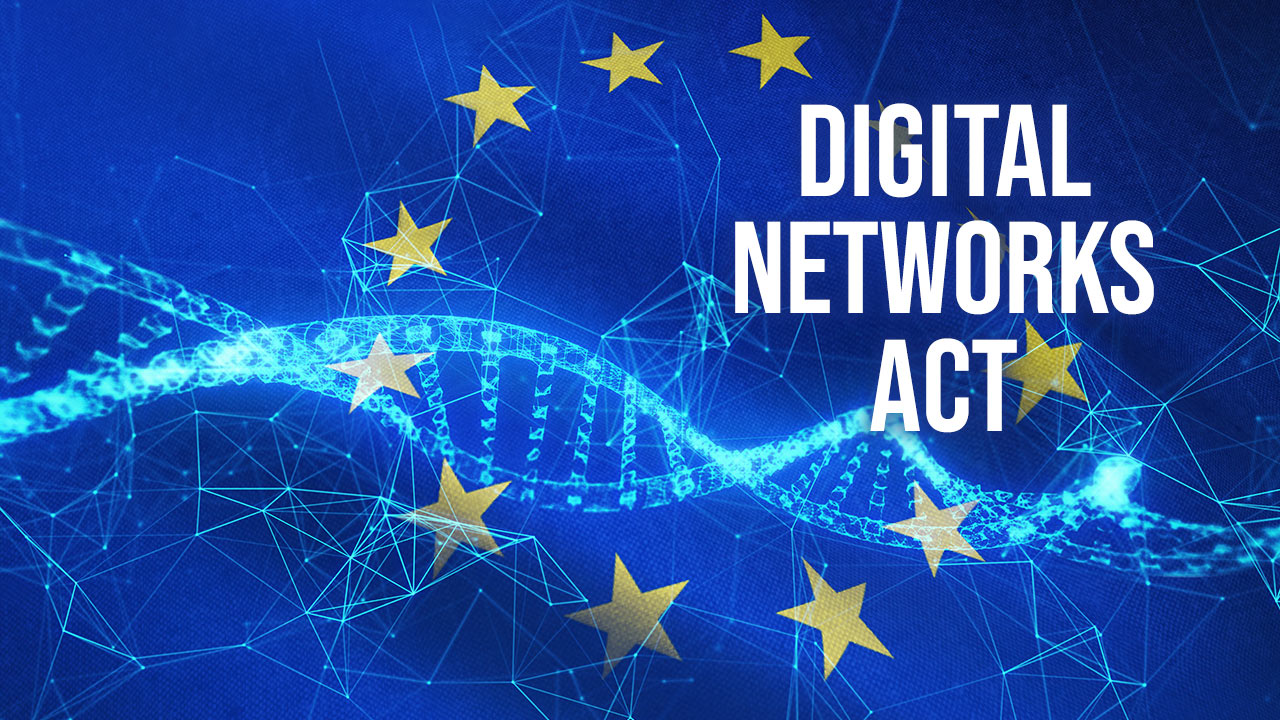The proposed Digital Networks Act (DNA), which the European Commission is expected to publish in December 2025, will mark a crucial moment in the evolution of the European telecommunications regulatory framework. This ambitious legislative initiative — described by Executive Vice-President Henna Virkkunen as “the biggest digital legislation the Commission will propose this year” — aims to profoundly modernize sector regulation. However, it also lies at the center of heated debates, particularly concerning the future of the European Electronic Communications Code (EECC).
Background: from commission studies to the June 2025 call for evidence
The path toward the DNA originates in a series of European Commission initiatives and studies, culminating in the February 2024 White Paper “How to master Europe’s Digital Infrastructure needs?” This document outlined the structural challenges of the European telecommunications sector, emphasizing the fragmentation of national markets, regulatory complexity, and the limitations of current governance models.
The White Paper was followed by complementary studies commissioned by the Commission from WIK Consult and Ernst & Young, intended to provide the evidentiary basis for the DNA’s impact assessment. The Call for Evidence , launched on June 6, 2025, and concluded on July 11, 2025, followed the framework outlined in the White Paper. It revolved around central themes such as regulatory simplification, spectrum management, initiatives to ensure a level playing field between telcos and OTTs, and modernization of access regulation. Overall, the consultation gathered 326 contributions from stakeholders across Europe.
Previous reports: Draghi and Letta as catalysts for change
The DNA proposal does not arise in a political vacuum. It has been significantly influenced by the 2024 Draghi and Letta reports , which provided the political and technical rationale for an ambitious sector reform.
The Draghi report on European competitiveness identified telecommunications as a strategic sector, recommending greater consolidation and market definition at the EU — rather than the national — level. The Letta report on the single market further stressed the importance of telecommunications for European competitiveness, proposing a transition from 27 national markets to a single European one. Both reports converged on the need for European scale to compete globally, while maintaining strong consumer protection principles.
However, both reports have faced significant criticism — from academics and independent observers — who noted that many of the proposed solutions largely reflect long-standing partisan positions, particularly those of incumbent telcos and their financial backers.
Debate and controversies on the european electronic communications code
The most divisive aspect of the DNA debate concerns the revision of the European Electronic Communications Code (EECC) and, in particular, access regulation . Industry and institutional positions are deeply polarized on this point.
Alternative operators, mainly represented by ECTA (European Competitive Telecommunications Association) , argue that the EECC has functioned effectively, enabling Europe to achieve satisfactory results in terms of infrastructure competition and widespread connectivity at accessible conditions. ECTA has voiced particular concern about proposals for access deregulation, warning that introducing a deregulated wholesale pricing regime for SMP operators (those with Significant Market Power) could undermine competition. These operators view ex-ante regulation as essential to maintaining fair market conditions.
Conversely, incumbent operators, represented primarily by Connect Europe , are pushing for substantial deregulation of the access framework. Their main argument is that the current network regulation discourages investment in next-generation infrastructure such as fiber and 5G .
Other controversial issues: fair share and dispute resolution for interconnection
Another highly contentious issue involves proposals related to the so-called “fair share” mechanism — through which large traffic generators (e.g., Netflix, Google, Meta) would contribute to the costs of network infrastructure.
The idea was initially shelved at the European level, due to the lukewarm stance of Member States — as reflected in the Council Conclusions of December 6, 2024 — and the subsequent EU–US trade agreements of July 2025. Nevertheless, the Commission now appears inclined to introduce a dispute resolution mechanism for IP interconnection issues. Critics argue that this would effectively reintroduce the fair-share principle “through the back door,” creating a form of regulation by litigation.
A coalition of 81 European consumer organizations has signed a joint statement opposing this proposal, warning that it would undermine net neutrality .
Prospects for December 2025
According to preliminary reports, the final DNA proposal may be “less ambitious” than the comprehensive overhaul envisioned in the 2024 White Paper. Vice-President Virkkunen has indicated a retreat from the more aggressive consolidation agenda, stating that “size is not everything” and that “many small companies can be very innovative and competitive.”
This more moderate stance likely reflects strong opposition from Member States, whose 2024 Council Conclusions largely rejected the idea of creating European telecommunications “champions” through market consolidation.
Toward a new regulatory balance
The DNA could represent a significant step toward modernizing European telecommunications — though it must be acknowledged that the current regulatory framework has performed reasonably well. Europe already boasts fiber deployment figures superior to those of the United States, and at significantly more affordable prices. Some European countries are even global leaders, outperforming South Korea and Japan.
Nevertheless, the debate remains sharply polarized. The profound divisions over access regulation highlight the challenge of balancing investment incentives with competition safeguards . While alternative operators defend the existing framework as a guarantor of competitive markets, incumbents advocate deregulation that would allow them to fully capitalize on their infrastructure investments.
The Commission’s challenge will be to design a proposal that simplifies and harmonizes rules without jeopardizing the competitive progress achieved over recent decades. The success of the DNA will depend on its ability to reconcile investment needs with competition principles , within an increasingly complex global environment where Europe must maintain technological leadership without sacrificing benefits for consumers and businesses.
— By Innocenzo Genna, Legal specialist in EU digital policy, competition and liberalization regulations


